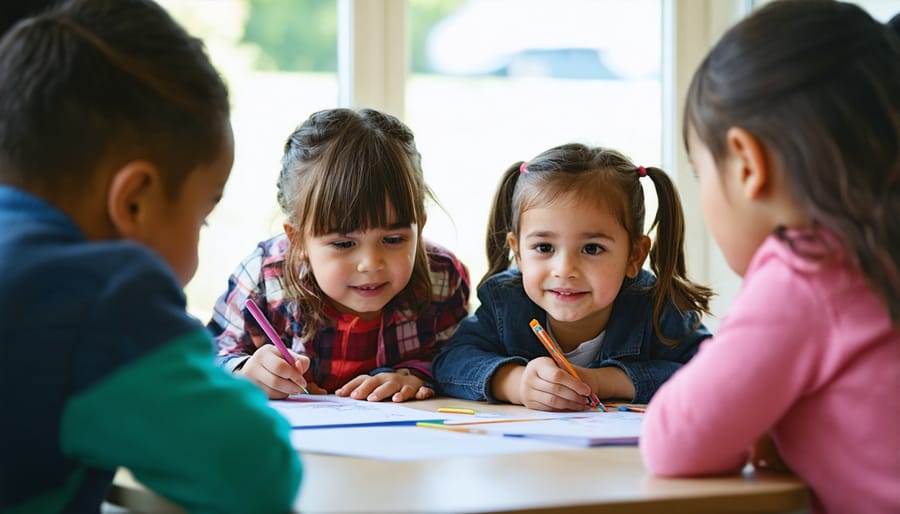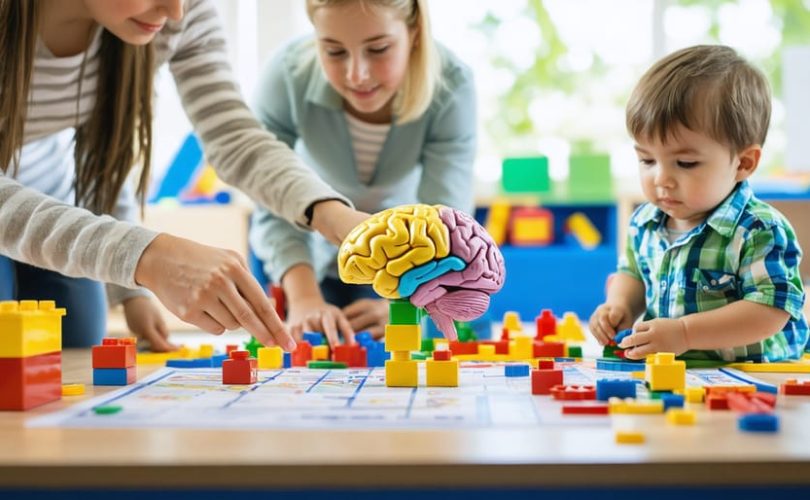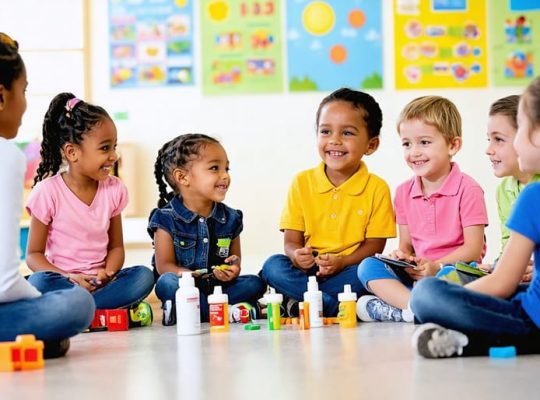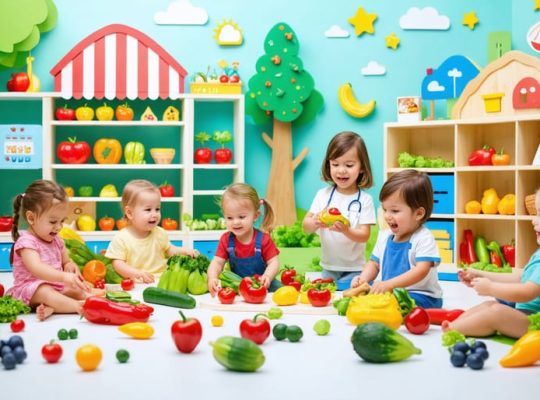Building a strong foundation in early childhood education demands a comprehensive, evidence-based approach that nurtures both cognitive and emotional development. Research consistently shows that the first five years of life are crucial for establishing lifelong learning patterns, much like how early substance abuse prevention shapes long-term behavioral outcomes.
Educational experts now recognize that successful early childhood programs combine structured learning with play-based exploration, creating environments where children naturally develop critical thinking skills while maintaining their innate curiosity. This balanced approach, supported by decades of developmental research, has shown remarkable success in fostering both academic readiness and social-emotional competence.
Recent studies from leading child development institutions demonstrate that when educators implement research-backed practices consistently, children show significant improvements in language development, problem-solving abilities, and social skills. These foundational skills serve as building blocks for future academic success and emotional well-being, making early childhood education a critical investment in our children’s future.
This article explores proven strategies that educators and parents can implement immediately to create enriching early learning experiences, drawing from both classical developmental theories and cutting-edge educational research.
The Critical Early Years: Why Prevention Starts in Childhood

Understanding Brain Development Ages 3-8
Between ages 3 and 8, children’s brains undergo remarkable development, creating millions of neural connections that shape their future learning and behavior. During this critical period, children develop essential cognitive skills like memory, reasoning, and problem-solving while building emotional intelligence and social awareness.
Dr. Sarah Chen, a pediatric neurologist, explains: “These years are like laying the foundation of a house. Every experience, interaction, and learning opportunity strengthens neural pathways that will support lifelong learning and emotional regulation.”
Children at this age begin understanding cause and effect, developing empathy, and gaining better control over their emotions. Their language abilities expand dramatically, enabling more complex communication and social interactions. They also start grasping abstract concepts and developing their unique personalities.
Parents and educators can support this development by:
– Providing rich, varied learning experiences
– Encouraging creative play and exploration
– Maintaining consistent routines
– Offering emotional support and guidance
– Engaging in meaningful conversations
– Creating safe spaces for trial and error
Remember that each child develops at their own pace, and providing a nurturing, stimulating environment is key to supporting healthy brain development during these formative years.
Building Resilience Through Education
Early education plays a crucial role in developing a child’s mental resilience and decision-making abilities. When children engage in structured learning environments, they naturally encounter challenges that help them build emotional strength and problem-solving skills.
Through guided play and interactive activities, young learners develop the confidence to tackle new situations and bounce back from setbacks. As Maria Thompson, a veteran early childhood educator, notes, “When children learn to navigate classroom challenges early on, they develop an ‘I can do it’ attitude that stays with them throughout their lives.”
Educational settings provide safe spaces for children to practice making choices and dealing with their consequences. Whether it’s choosing between activities, resolving conflicts with peers, or managing frustration during difficult tasks, these experiences build the neural pathways necessary for resilient thinking.
Parents and educators can support this development by:
– Offering age-appropriate choices
– Celebrating effort over perfection
– Encouraging problem-solving through gentle guidance
– Creating opportunities for supervised risk-taking
– Modeling resilient behavior
These early experiences in education lay the groundwork for lifelong emotional strength and adaptability, essential skills for future success and well-being.
Core Educational Strategies That Work
Social-Emotional Learning Activities
Building emotional intelligence in early childhood is crucial for developing evidence-based prevention strategies that last a lifetime. Here are several effective activities that nurture social-emotional development:
Circle Time Emotions: Start each day with children sitting in a circle, sharing how they feel using emotion cards or simple facial expressions. This helps children recognize and articulate their feelings while learning that all emotions are valid.
Friendship Factory: Create partner activities where children work together on simple projects, like building with blocks or completing puzzles. This develops cooperation, communication, and problem-solving skills.
Calm Corner Creation: Set up a dedicated space with soft cushions, stress balls, and picture books where children can go when feeling overwhelmed. Teach them breathing exercises and self-calming techniques to use in this space.
Empathy Stories: Read books featuring characters experiencing different emotions and situations. Pause to discuss how the characters might feel and what could help them feel better.
Role-Playing Scenarios: Act out common social situations like sharing toys or resolving conflicts. Guide children through appropriate responses and problem-solving techniques while validating their feelings.
These activities should be integrated naturally throughout the day, creating opportunities for children to practice emotional awareness and social skills in authentic situations.

Creating Safe Learning Environments
Creating a safe learning environment is fundamental to children’s development and well-being. When children feel secure, they’re more likely to explore, engage, and develop positive relationships with others. Start by establishing clear, consistent routines that help children understand what to expect throughout their day. This predictability builds confidence and reduces anxiety.
Physical safety is essential – ensure all areas are child-proofed, materials are age-appropriate, and spaces are organized to allow both active play and quiet reflection. Create cozy corners where children can retreat when feeling overwhelmed, complete with soft cushions and calming activities.
Emotional safety is equally crucial. Foster an atmosphere where children feel comfortable expressing their feelings and asking questions. Use positive reinforcement and validate children’s emotions, even when helping them manage challenging behaviors. As educator Maria Santos notes, “When children feel emotionally safe, their natural curiosity flourishes.”
Promote inclusive practices by celebrating diversity through books, activities, and materials that represent different cultures and family structures. Establish clear communication channels with families to ensure consistent support between home and school environments.
Remember to regularly assess the environment through a child’s perspective. Are materials easily accessible? Do children have opportunities for both independent exploration and collaborative play? Making thoughtful adjustments based on these observations helps maintain an environment where every child can thrive.
Teaching Healthy Decision-Making
Young children learn best through hands-on experiences and gentle guidance. When it comes to teaching healthy decision-making skills, educators and parents can create opportunities for children to practice good judgment in safe, supportive environments.
Start with simple choices, like selecting between two healthy snacks or choosing which activity to do first. This builds confidence and helps children understand the connection between their choices and outcomes. Use positive reinforcement to acknowledge when children make thoughtful decisions, explaining why their choice was beneficial.
Role-playing scenarios offer excellent practice for real-life situations. Create simple scenarios where children can act out making safe choices, such as asking an adult for help when needed or waiting their turn during activities. Remember to keep these scenarios age-appropriate and focused on everyday situations children might encounter.
Visual aids, such as picture books and simple charts, can help illustrate the consequences of different choices. For example, showing images of children washing hands and staying healthy versus getting sick can help them understand cause and effect.
Incorporate decision-making into daily routines by offering structured choices throughout the day. This might include selecting clothes to wear, choosing books for story time, or deciding between indoor and outdoor play activities. These regular opportunities help children develop confidence in their ability to make good choices while feeling supported by caring adults.

Partnering with Parents and Caregivers
Communication Techniques
Open, honest communication between educators and families forms the foundation of successful prevention efforts in early childhood settings. When discussing sensitive topics with parents, it’s essential to create a supportive and non-judgmental environment where everyone feels heard and valued.
Begin conversations by highlighting the child’s strengths and positive developments, which helps establish trust and rapport. Share specific observations about the child’s social-emotional growth and learning achievements before addressing any concerns. This approach demonstrates your commitment to the child’s overall well-being and helps parents feel more receptive to prevention-focused discussions.
Effective parent-teacher collaboration relies on regular, two-way communication channels. Consider implementing various communication methods such as face-to-face meetings, digital newsletters, or secure messaging platforms to accommodate different family schedules and preferences.
When discussing prevention strategies, use clear, age-appropriate language and provide specific examples of how families can reinforce healthy behaviors at home. Share resources and educational materials that families can explore together, and always remain open to questions and feedback. Remember to acknowledge cultural differences and adapt your communication style accordingly to ensure all families feel respected and understood.
Regular check-ins and progress updates help maintain ongoing dialogue and demonstrate your commitment to supporting both the child and their family throughout their educational journey.
Supporting Home Learning
Learning doesn’t stop at the classroom door – parents play a crucial role in reinforcing early childhood education at home. Creating a supportive learning environment can be both fun and educational for young children.
Start by establishing a dedicated learning space where your child feels comfortable and focused. This could be a small desk area or a cozy reading corner with age-appropriate books and materials. Keep the space organized and free from distractions.
Incorporate learning into daily routines through simple activities:
– Practice counting during meal preparation
– Identify colors and shapes during neighborhood walks
– Share storytelling sessions before bedtime
– Engage in arts and crafts that develop fine motor skills
– Play educational games that encourage problem-solving
Remember to maintain consistent communication with your child’s teachers to align home activities with classroom lessons. Ask about current topics and themes being explored at school, then extend these conversations at home through related activities and discussions.
Digital resources can complement traditional learning methods, but remember to maintain healthy screen time limits. Look for educational apps and programs recommended by your child’s educators.
Most importantly, make learning enjoyable. Children learn best through play and positive interactions. Celebrate their efforts and discoveries, creating an atmosphere where curiosity and questions are encouraged. This foundation of supportive home learning will contribute significantly to your child’s educational journey.
Measuring Success and Making Adjustments
Signs of Program Success
When early childhood education programs are truly effective, several key indicators become apparent. Children demonstrate increased engagement in learning activities and show improved social-emotional skills, such as better self-regulation and positive peer interactions. Teachers report more meaningful connections with their students and observe enhanced problem-solving abilities during daily activities.
Academic readiness markers, including early literacy skills and number recognition, typically show steady improvement. Parents often notice their children using new vocabulary at home and displaying greater curiosity about the world around them. Classroom observations reveal students actively participating in group discussions and showing enthusiasm for learning experiences.
Another strong indicator is the development of consistent daily routines and smooth transitions between activities. Children demonstrate growing independence in self-care tasks and show pride in their accomplishments. Regular attendance rates remain high, and families actively engage in school activities and parent-teacher communications.
These success markers create a positive feedback loop, where children’s achievements motivate continued engagement and learning, fostering an environment where every child can thrive and develop to their full potential.
When to Adapt Your Approach
Every child develops at their own unique pace, and what works for one may not work for another. It’s essential to regularly assess the effectiveness of your educational approaches and be willing to make adjustments when needed. Pay attention to signs that your current strategies might need modification, such as decreased engagement, behavioral changes, or learning plateaus.
When children show resistance to certain activities or teaching methods, consider it an opportunity to explore alternative approaches. For instance, if a child struggles with traditional circle time activities, try incorporating more movement or breaking the session into shorter segments.
Regular observation and documentation of children’s responses to different activities will help you identify patterns and make informed adjustments. Maintain open communication with families to understand how children respond to various learning experiences at home and use this feedback to refine your approach.
Remember that adaptation doesn’t mean completely abandoning your core educational principles. Instead, focus on finding creative ways to present the same concepts through different methods that better resonate with each child’s learning style and developmental stage.
Early childhood education provides the cornerstone for lifelong learning and development. By implementing the strategies and approaches discussed throughout this article, educators and caregivers can create nurturing environments that support children’s growth and well-being. The key lies in maintaining consistent, developmentally appropriate practices while fostering strong partnerships between families and educational institutions.
Remember that every child is unique, and what works for one may need adjustment for another. Stay flexible and observant, adapting your approach based on individual needs while maintaining the core principles of effective early childhood education. Regular assessment and documentation of children’s progress help ensure that educational goals are being met and that interventions can be made when necessary.
The success of early childhood programs depends heavily on the dedication of educators and the support of families. By working together, sharing resources, and maintaining open communication channels, we create a strong foundation for children’s future academic and social success.
As you move forward in implementing these practices, focus on creating joy in learning, building strong relationships, and maintaining high-quality educational standards. Small steps taken consistently can lead to significant positive outcomes in children’s development. Your commitment to providing excellent early childhood education makes a lasting difference in the lives of young learners and their families.
Continue to stay informed about best practices, engage in professional development opportunities, and collaborate with colleagues to enhance your teaching strategies. The investment we make in early childhood education today shapes the leaders, thinkers, and citizens of tomorrow.







